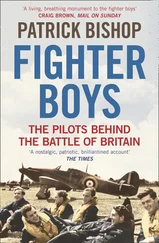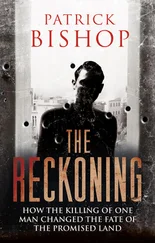He had met Alec, ‘a tall, likeable chap’ while training in South Africa and caught up with him at RAF Lindholme where the HCU was based. One night he was detailed for a high-level cross-country flight, even though the weather forecast had warned of heavy cloud and severe icing conditions. To reduce the risk, it was essential to fly at maximum altitude. ‘Alec took off and after a while found that his aircraft would not climb above 15,000 feet. Consequently he returned to RAF Lindholme. Wing Commander X heard about this and ordered Alec to continue the exercise, refusing to believe that the aircraft could not reach a safe height and accused him of being LMF. Intimidated, Alec and his crew went off. The following day we heard that his aircraft had crashed into a Scottish mountain and all were dead.’ The instructor was to die in an accident a few months later. 22
The road to the operational squadrons was long and expensive. It cost on average £10,000 to train each crew member, the equivalent, according to one indicator, of about £850,000 in today’s money. This was a lot to pay to get each Bomber Boy into battle. It did not, however, mean that when they got there, their lives would be worth very much.
Bomber Command lost 4,823 men and 2,331 aircraft on operations in the first two years of the war. There was very little to show for it. In that time it dropped only 35,194 tons of bombs. That was two thousand tons less than it dropped in the single month of May, 1944. Despite the great effort, the resulting destruction was often small and the casualties inflicted were minimal. A typical night’s work was that of 29/30 August 1941. More than 140 aircraft were sent to attack railways and harbours in Frankfurt. They reached their target successfully and began bombing. They managed to do some damage to a gasworks, a barrel warehouse and a few houses and to kill eight people. In the course of the operation one Hampden was lost without trace. Another crashed in France killing all on board. A Halifax crew baled out over England after running out of fuel but two men died in the process, one after his parachute got caught in the tailplane. A Whitley was forced to ditch off the Essex coast. All in all, the operation resulted in the loss of sixteen lives – two for every German killed – and seven aircraft. Despite the sacrifice, the attack barely bothered the Frankfurt authorities who nonchalantly recorded the raid as ‘light and scattered bombing’.
The perils of each trip mounted as the German fighter and flak defences adapted and improved. In March 1941, Doug Mourton arrived at 102 Squadron to fly as a wireless operator on Whitleys. One night his crew were detailed to attack Hamburg. Initially, it seemed ‘a comparatively easy trip’. They took off in bright moonlight and as the target approached Mourton could see another Whitley flying a parallel course. ‘Suddenly it exploded. What had been an aircraft a few seconds before, was now a mass of debris, flying through the air. It had apparently been hit by an anti-aircraft shell, most likely in its bomb bay …’ He learned later that the pilot had been Alec Elliot, his best friend on the squadron with whom he had passed many nights in the pub and played innumerable games of crib while waiting in the crew room. 1
After enduring such experiences the crews were reluctant to believe that their efforts were being wasted. To be able to carry on it was necessary to persuade oneself that the risks were worth it. From the air it was impossible to know whether or not a raid had succeeded. The sight of big fires burning below was taken as a measure of success. But they could not know what these blazes were. The Germans soon suspected that the attacking aircraft had often only the haziest idea of their whereabouts. They developed a system of decoy fires which they hoped the arriving aircraft would mistake for the target. It worked very well. Many a crew returned home satisfied they had carried out their mission after bombing empty countryside.
A different sort of deception was being perpetrated on the home front. Government propaganda painted a picture of continuous success. A broadcast by Flight Lieutenant J. C. Mackintosh, a bomb-aimer in a Hampden, made night bombing sound like a cool, precise science. His script started with the bold assertion that ‘when the war began we were well-trained in finding targets in the dark and were therefore never compelled to bomb indiscriminately through the clouds.’ He went on to describe a recent attack on an oil refinery. At first, the crew thought it a tricky target. But the fact that it was sited near a bend on a river which would provide a useful navigational reference caused them to decide that ‘perhaps, after all, it would not be such a difficult job to find.’ As they entered the target area they located the river but after three runs through anti-aircraft fire had still not spotted the objective. Mackintosh gamely called on the skipper to go round once more. Then, ‘there it was. The dim outline of an oil refinery wonderfully camouflaged. It was getting more and more into the centre of the sights. I pressed the button and my stick of bombs went hurtling towards Germany’s precious oil. The rear gunner watched the bombs burst and in a very few seconds those thousands of tons of valuable oil had become hundreds of feet of black and acrid smoke.’ 2
This was strategic bombing as dreamt of by the Air Ministry planners. But it was rare indeed that events followed Mackintosh’s script. A more typical experience was that of Eric Woods, who had joined the RAF before the war as a reservist and qualified as a navigator before being sent to 144 Squadron. His first operation was on the night of 9/10 October 1940 and the target was the Krupp factory in Essen, one of the first of many that would be launched against this citadel of German military industry. At the briefing the crews were told they could expect only scattered cloud over the target. But ‘from the outset it was obvious that the Met people had got it wrong as a solid mass of cloud was clearly visible below and as we progressed eastwards we saw that the cloud was becoming denser ahead. We pressed on but two ominous developments took place: a film of ice appeared on the windscreen and an opaque mass of rime ice began to spread out along the leading edge of each wing.’ His Hampden’s twin engines started to run rough as ice found its way into the fuel inlet system. ‘There was a hurried conference since it was pretty obvious that the target was unlikely to be identifiable, so the decision was taken to fly on and see what happened when we reached our ETA (Estimated Time of Arrival). In the event at that time we were still in dense cloud, the whole mass being lit up by searchlights sweeping below, with frequent bright flashes which could have been anti-aircraft fire or bomb bursts, I certainly knew not what.’ With no sight of the ground and dreadful weather conditions a decision was made not to bomb but to seek some alternative target on the way home. As they headed homewards ‘the cloud began to break up to the west, quite the opposite to what the weatherman had said … we did in fact fly along the Scheldt estuary and as we passed over the port of Flushing the navigator let go with our total load and I clearly saw bomb bursts though I wasn’t sure precisely where they landed.’ 3Only three of the aircraft that set out reached their target.
The basic problem remained navigation. There was no accurate means of directing the bombers to faraway targets and none would arrive until March 1942. In the meantime, navigators relied on dead reckoning and the main instrumental aid was the sextant. This was still the pioneer age of bombing. ‘The aircraft were without heating and the cold was appalling,’ wrote Doug Mourton later. ‘The crews flew clothed in layers of silk, wool and leather and yet they were still bitterly cold. Vital systems jammed, wings iced up for lack of adequate de-icing gear [and] guns froze …’ The navigator gave his pilot a course on take-off and then, if he was lucky and the skies were clear, looked out for landmarks to check if they were on track. When visiting Germany they left England’s shores over Flamborough Head then scoured the sea below for the Friesian Islands off the Dutch coast, where German night-fighters lurked, straining to get at the raiders. If the conditions were right, the navigator might use his sextant to obtain a fix from the stars, but only if the pilot was willing to fly straight and level long enough. The crews were given a weather forecast before leaving, but they were notoriously unreliable. Predicted winds failed to blow and unpredicted ones drove the bombers hopelessly off course. It was no wonder that German targets were sometimes unaware that they had been the subject of an attempted attack.
Читать дальше












